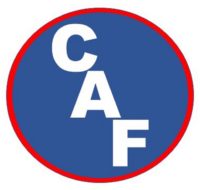There are a few components that are part of the CAF System but do not fit intot he Hydraulic or Air Circuit systems. These components can be found on this page.
Check Valves
There are two areas where you will find water check valves. The first is in the plumbing from the pump, just after the pump-to-tank recirculation valve and just before the foam concentrate injection port just ahead of the foam manifold. This check valve prevents foam concentrate from backing into the pump-to-tank recirculation valve resulting in foam build up in the water tank, and it prevents any chance of foam concentrate backing up to the pump. The 2nd location to find check valves in the water system is at each CAF capable discharge valve. The water line discharge check valves prevent compressed air from entering the water system.
Similarly, at each air discharge valve, there are check valves that prevent water from entering the compressed air system.
If compressed air could back up into the water system far enough (through 2 check valves) cavitation could occur. However, if water could back up into the air system and reach the Air/Oil Separator (AOS), the water could be mixed with and dilute the oil and slowly fill up the sump (Refer to the Site Gauge). Neither issue is field corrected, and requires notification of the F-7 certified EVT Mechanic.



Solution Discharge Valve
This valve is nothing more than the standard water discharge valve on the pump and is the only component of the CAF System not added on. While check valves are added to the discharge, the valve itself already exists. Once the foam proportioning system is turned on (The Red Button is pushed) this water discharge now becomes the Solution Discharge Valve.
The Solution Discharge Valve is the control valve used to increase or decrease the solution flow which will correspondingly allow more or less air into the hose line changing the finished foam from a wet to a fluid foam.
Air Discharge Valve
The Air Discharge Valve is the valve that turns on the air to mix with the solution as it heads into the hose to agitate and become Compressed Air Foam. Air valves might be manual or electric. Manual valves can be adjusted to increase or decrease air flow. Electric valves are either open or closed. The most common way to adjust the amount of air flowing into the fire hose is by adjusting the solution flow (Solution Discharge Valve – see above).


Drain Valves
Small and located low on the system, drain valves are necessary to drain water from the CAFS. This is critical in areas where and when freezing temperatures are expected and experienced. The three areas to drain are the pump, the foam manifold and the heat exchanger. The CAFS operator should know how these drain lines are mounted to ensure all water is properly drained. A truck sitting on a slight incline/tilt (forward or back, one side or the other) might prevent all the water from draining. A small amount of ice formation in the small tubes of the heat exchange (shell & tube type) may be all that is necessary to rupture one of the copper tubes and destroy the component.

Hot/Cold Water Lines
There is a cold water line running from the pump to the Wye Cleanout Strainer. The cold water line contines to the Heat Exchanger. From the Heat Exchanger, a hot line runs to the water tank. CAUTION – the hot water line can cause severe heat reated burns (depending on the amount of compression).

































